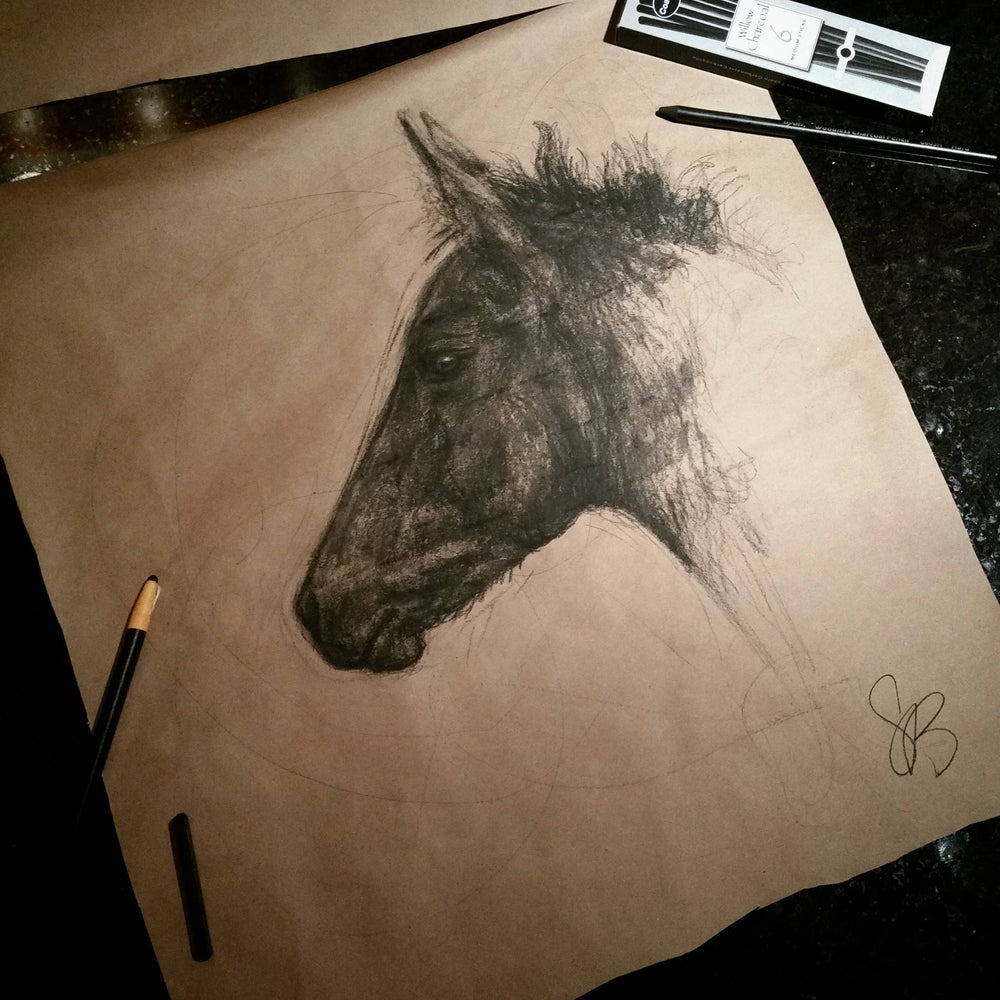
The term “marketing” tends to make me break out in an uncomfortable rash. Every time I hear it, I picture a car salesman trying to convince people they really do need a brand new Porsche. Marketing can feel inauthentic, even manipulative, a sensation that often leaves artists adrift in the vast sea of self-promotion.
But let's reflect a little: is a sculpture simply an object? A commodity like a toaster or a raincoat? While the latter serve a specific purpose - toasting bread, shielding from the rain - a sculpture does more than that. It doesn't just occupy space; it communicates, resonates, and provokes. Unlike a raincoat, you can't proclaim your sculpture is superior to another – art, in its beauty, is deeply subjective. What may move one person may leave another entirely indifferent.
 Visiting with my favourite sculpture in Vancouver, BC by Joe Fafard
Visiting with my favourite sculpture in Vancouver, BC by Joe Fafard
With this complexity in mind, I have reframed my understanding of what it means to put my art out there. No longer do I see it as 'marketing' with its negative connotations, but rather as 'sharing'. There is a joy and a fulfillment in sharing my work with others, just as there is in witnessing the creations of my peers. The intention isn't to compete but to inspire, to alter perceptions, to challenge and be challenged. The corporate world of marketing doesn't move me; sharing, however, touches my soul.
Creating art is an intimately personal journey. Each piece we produce is a part of ourselves rendered visible, often leaving us in a space of vulnerability. Sharing your work inevitably invites both praise and criticism, and the latter can be a bitter pill to swallow. From online comments to reactions at art fairs, artists hear it all. “I don’t like it.” “I could buy something similar for less.” Yes, it’s a part of the deal, but remember, every interaction, every critique, is an opportunity for growth.
 "Of Might and Momentum", glazed ceramic sculpture by Susie Benes
"Of Might and Momentum", glazed ceramic sculpture by Susie Benes
Of course, sharing isn’t without its risks. The fear of rejection can be potent, as can the fear of remarkable success. But just like life, art also involves risk. I've come to believe that the benefits of sharing far outweigh these risks.
Sharing allows you to spread your work to a wider audience and form invaluable connections. It opens doors to receiving feedback from other artists, an aspect that's particularly crucial if you work from home. It can lead to producing stronger work and offers a wellspring of inspiration.
However, there are valid concerns, too. Worries about having our ideas “stolen” and seeing others gain credit for our concepts are all too common. With every artwork we share, we're putting pieces of ourselves out there. This reluctance to share can apply not only to the theme and execution of our work but also to our artistic techniques. Over time, we develop unique approaches to our craft, honed through years, if not decades, of experimentation. It's understandable to want to protect these 'trade secrets'. Sharing shouldn't equate to giving away all that makes your art unique to the first person who asks.
 An air dry clay Pegasus sculpture being painted
An air dry clay Pegasus sculpture being painted
So, we find ourselves straddling a line – eager to share our creations, yet cautious about protecting our unique artistic identity. This tension can seem paralyzing, but it needn't be. The art world is vast and diverse, filled with myriad styles and approaches. There's room for everyone to coexist, to inspire and be inspired, without losing what makes our work uniquely ours. The secret lies in striking the right balance – in learning to share enough to engage and intrigue, without giving everything away.
In the next blog post, we'll delve into the realm of copyrights to give you an overview of this territory and give you some tips on ensuring your work remains safely your own, even as you share it with the world.

